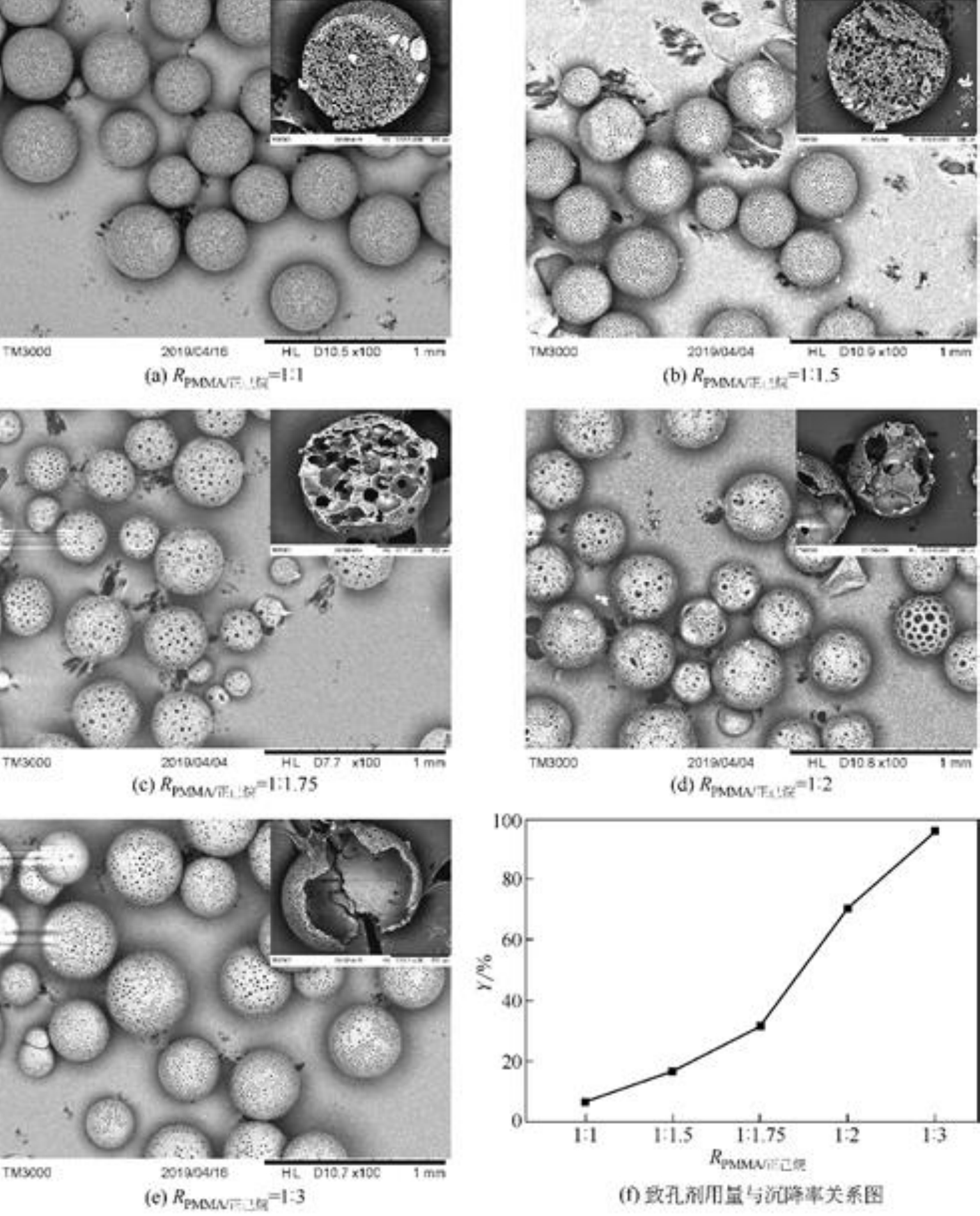| 1 |
洪雅真, 朱利会.载阿霉素聚乳酸多孔微球的表征及释药性能[J]. 化工进展, 2018, 37(3): 1130-1136.
|
|
HONG Yazhen, ZHU Lihui. Synthesis, characterization and in vitro drug release performance of poly-L-lactide porous microspheres[J]. Chemical Industry and Engineering Progress, 2018, 37(2): 1130-1136.
|
| 2 |
张豪, 褚良银, 胡林. PHEMA多孔微球和微囊的制备及生物医药应用进展[J]. 化工进展, 2008, 27(2): 196-201.
|
|
ZHANG Hao, CHU Liangyin, HU Lin. Progress in preparation and biomedical application of porous poly(2-hydroxyethyl methacrylate) microspheres and microcapsules[J]. Chemical Industry and Engineering Progress, 2008, 27(2): 196-201.
|
| 3 |
李梓超, 曾来, 刘华蓉, 等. 贯通多孔聚合物微球的制备及其应用[J]. 高分子学报, 2015(12): 1449-1455.
|
|
LI Zichao, ZENG Lai, LIU Huarong, et al. Preparation and application of highly interconnecting porous polymer microspheres [J]. Acta Polymerica Sinica, 2015(12): 1449-1455.
|
| 4 |
LU J, TOY P H. Organic polymer supports for synthesis and for reagent and catalyst immobilization[J]. Chemical Reviews, 2009, 109(2): 815-838.
|
| 5 |
石旭东, 孙磊, 甘志华. 不同溶剂制备的聚乳酸多孔微球的形成机理[J]. 高分子学报, 2011(8): 866-873.
|
|
SHI Xudong, SUN Lei, GAN Zhihua. Formation mechanism of solvent-induced porous PLA microspheres[J]. Acta Polymerica Sinica, 2011(8): 866-873.
|
| 6 |
KIM T K, YOON J J, LEE D S, et al. Gas foamed open porous biodegradable polymeric microspheres[J]. Biomaterials, 2006, 27(2): 152-159.
|
| 7 |
CORRIGAN O I, HEELAN B A. Characterization of drug release from diltiazem-loaded polylactide microspheres prepared using sodium caseinate and whey protein as emulsifying agents[J]. Journal of Microencapsulation, 2001, 18(3): 335-345.
|
| 8 |
姚顺治, 单梦醒, 朱天赐, 等. 泡沫分离法制备聚苯乙烯多孔微球[J]. 化工进展, 2018, 37(7): 2753-2758.
|
|
YAO Shunzhi, SHAN Mengxing, ZHU Tianci, et al. Preparation of porous polystyrene microspheres by using foam separation[J]. Chemical Industry and Engineering Progress, 2018, 37(7): 2753-2758.
|
| 9 |
周强, 郝军正, 祝琳华, 等. 泡沫相相分离制备多孔聚合物微球连续化工艺[J]. 化工学报, 2018, 70(3): 1208-1219.
|
|
ZHOU Qiang, HAO Junzheng, ZHU Linhua, et al. Foam phase preparation of porous poly(methyl methacrylate-co-butyl acrylate) microspheres in continuous process [J]. CIESC Journal, 2018, 70(3): 1208-1219.
|
| 10 |
张凯, 雷毅, 王宇光, 等. 微米级单分散共聚物微球的制备[J]. 高分子学报, 2002(3): 341-344.
|
|
ZHANG Kai, LEI Yi, WANG Yuguang, et al. Preparation of monodisperse copolymer microspheres with micron size[J]. Acta Polymerica Sinica, 2002(3): 341-344.
|
| 11 |
SCHMIDT W, ROESSLING G. Novel manufacturing process of hollow polymer microspheres[J]. Chemical Engineering Science, 2006, 61(15): 4973-4981.
|
| 12 |
姚伟, 高志贤, 房颜军, 等. 沉淀聚合法制备咖啡因分子印迹聚合物微球[J]. 化工进展, 2007, 26(6): 869-872.
|
|
YAO Wei, GAO Zhixian, FANG Yanjun, et al. Study on the synthesis and performance of caffeine molecularly imprinted polymer micro-spheres via precipitation polymerization[J]. Chemical Industry and Engineering Progress, 2007, 26(6): 869-872.
|
| 13 |
ZHANG S H, HUANG X, YAO N S, et al. Preparation of monodisperse porous polymethacrylate microspheres and their application in the capillary electrochromatography of macrolide antibiotics[J]. Journal of Chromatography A, 2002, 948(1): 193-201.
|
| 14 |
WU F Y, ZHU Y, JIA Z S. Preparation of dye-ligand affinity chromatographic packings based on monodisperse poly(glycidylmethacrylate-co-ethylenedimethacrylate) beads and their chromatographic properties[J]. Journal of Chromatography A, 2006, 1134(1): 45-50.
|
| 15 |
HOU Y, KONDOH H, SHIMOJO M, et al. Inorganic nanocrystal self-assembly via the inclusion interaction of β-cyclodextrins: toward 3D spherical magnetite[J]. The Journal of Physical Chemistry B, 2005, 109(11): 4845-4852.
|
| 16 |
CHRISTOPHER G F, ANNA S L. Microfluidic methods for generating continuous droplet streams[J]. Journal of Physics D: Applied Physics, 2007, 40(19): 319-336.
|
| 17 |
WANG W, ZHANG M J, XIE R, et al. Hole-shell microparticles from controllably evolved double emulsions[J]. Angewandte Chemie International Edition, 2013, 52( 31): 8084-8087.
|
| 18 |
NA X M, GAO F, ZHANG L Y, et al. Biodegradable microcapsules prepared by self-healing of porous microspheres[J]. ACS Macro Letters, 2012, 1(6): 697-700.
|
 ),祝琳华1,王红2,司甜1,何艳萍1(
),祝琳华1,王红2,司甜1,何艳萍1( ),孙彦琳1
),孙彦琳1
 ),Linhua ZHU1,Hong WANG2,Tian SI1,Yanping HE1(
),Linhua ZHU1,Hong WANG2,Tian SI1,Yanping HE1( ),Yanlin SUN1
),Yanlin SUN1





